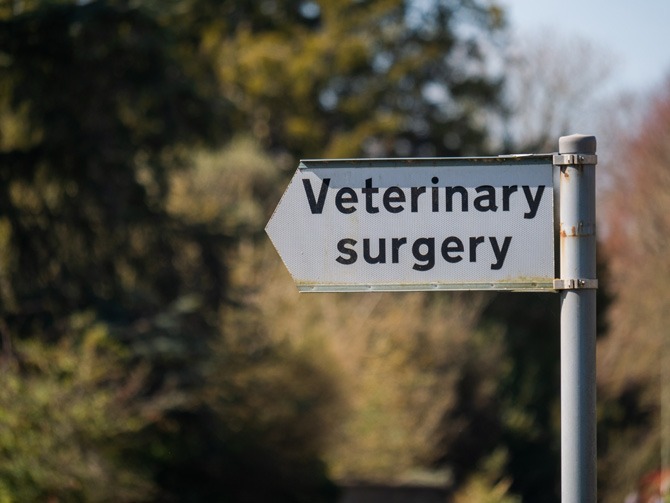As a pet sitter, how would you care for a dog with a broken bone? Or, what if a dog you’re walking has an accident and breaks a bone? Would you know what to do?
Broken bones are one of many health problems you can encounter as a pet professional. As such, it’s important to know how to spot the signs of a dog with a broken bone. Plus, how do you best care for a pooch with a fractured or broken limb?
Causes and symptoms
Of course, there is a multitude of possible reasons why a dog may break a bone. You might consider trauma, rough play, insufficient diet, genetics or an underlying disease. However, road accidents and falls are possibly the most common.
Certainly, in the majority of cases, the dog’s owner or carer will witness the cause. Yet, in some instances, the break may occur without an owner or carer (i.e. pet sitter or dog walker) knowing about it.
Sure, in cases of severe trauma, there is likely to be blood present, but in some instances, bleeding may not be apparent.
This is when it’s important to be able to recognise the symptoms of a dog with a broken leg. If a dog in your care displays any of the following symptoms it may be a sign of a broken limb.
- Unwillingness or inability to walk
- Awkward movement of a limb
- Limping
- Swelling or bruising
- Holding up the broken limb
- Whining (an indication of pain)
Transporting a dog with a broken bone
A dog with a broken bone will require veterinary treatment. Indeed, if the dog suffers a break or a fracture while in your care you need to know how to best transport your canine chum.
Transporting a pooch with a broken bone must be done carefully to avoid worsening the injury or the dog’s pain. Possibly the easiest way to move a dog with a broken bone is to enlist the help of a friend or neighbour.
Lay the dog on a blanket. Each picks up two ends and then you can carry the dog to the car likes he’s in a sling. You may like to use a few folded-up towels to help support the broken limb.
Don’t forget dogs in pain can become anxious or aggressive, so take care and watch for changes in behaviour. If you feel at risk, you may consider putting a muzzle on the dog.
Also, remember to call ahead and let the vet know you’re on your way!
Recovery care
To treat the dog it’s likely the vet will take an X-ray to determine the extent of the break. It’s also likely the pooch will be given medicine to help with his pain (such as a non-steroidal anti-inflammatory drug).
To treat the break, the vet will most likely put the limb in a cast or splint. However, the other option involves surgery—inserting pins or a plate. Either way, once the dog is back home he will need care and attention to help him recover well. Tips to assist recovery include:
Use a crate—Rest is an important part of healing. Using a crate can take away the temptation for a dog to try walking. This is particularly useful for adventurous puppies!
Provide assistance—You may need to make sure you’re close by at all times. This way if you see the pooch attempting to stand, you can assist him to get up and go to the toilet or reach his water bowl.
Administer medicine—Making sure you know how to correctly administer medicine to pets is important. You may be called upon to give your furry client his prescribed pain medicine.
Provide enrichment—A dog with a broken bone might be out of action for six months or so. Imagine how boring this would be. You can help keep your four-legged friend mentally stimulated and happy in a number of ways. Try:
- Massage
- Puzzle toys
- Chews
- Training exercises that don’t involve too much movement (such as taking something from your hands or picking an item up off the floor)
What’s your experience of caring for a dog with a broken bone?
Image source: Matt Seymour on Unsplash
Latest posts by Liz Walden (see all)
- Pet health: Medicinal cannabis for pets - December 27, 2021
- What pet business insurance do I need? - November 17, 2021
- Pet sitters: how to take time off - November 15, 2021










Leave A Comment